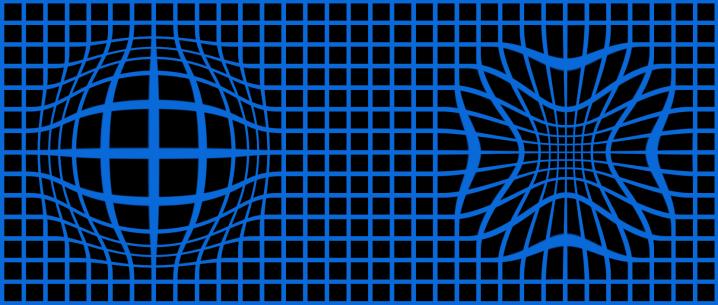2. Basic principles
2.1 Strong nuclear force
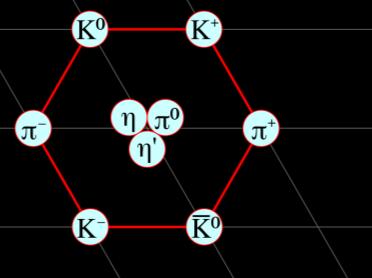

1: From quantum dynamics to general relativity.
The atomic nucleus is the fundamental constituent of matter at the center of an atom, consisting of protons and neutrons, each one conformed by 3 quarks These quarks remain bound together due to the strong nuclear force, which is the strongest of the fundamental forces with a scope not greater than 10-15 meters. It has been determined that more than 99% of the proton mass is concentrated in the atomic nucleus, and less than 1% comes from residual forces
Gluons act as the exchange particle for the strong force between quarks, preventing them from separating by a constant force of attraction with a theoretical maximum of 10.000 N (≈ 1.000 Kg)
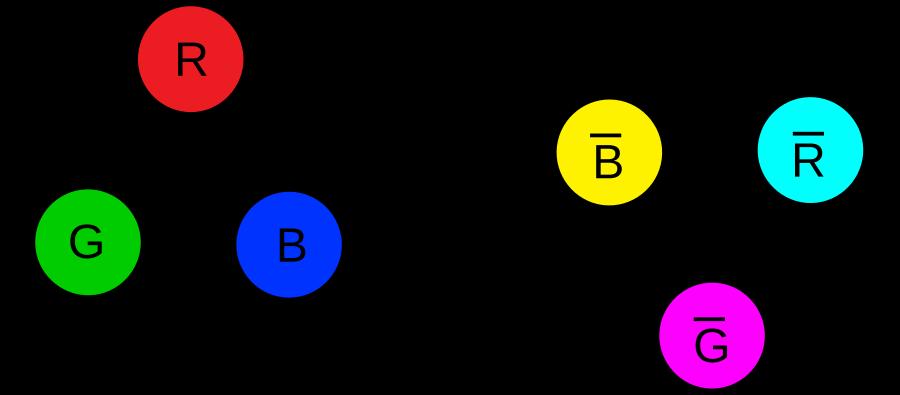
2: Color charge transitions (QCD).
In quantum chromodynamics (QCD), a quark's color can take one of three values or charges: red, green, and blue. An antiquark can take one of three anticolors, called antired, antigreen, and antiblue. Gluons are mixtures of two colors, such as red and antigreen, which constitute their color charge. The "color charge" of quarks and gluons is not related to the everyday meanings of color and charge, but is related to its hidden internal degree of freedom.
Recently, studies in Lattice QCD have found that the force distributions within the proton depend on its internal position [10] 2.2 Quantum vacuum
We can note two inherent qualities of the quantum vacuum:
▪ Particles superconductor The distance to the most distant galaxy detected by human beings is more than 30 billion light years, which means there are photons that are able to travel that distance without decreasing their speed, modifying only their wavelength. Like light, an object can move into space for a practically unlimited period as long as it doesn’t find a force to stop it, so we can determine that the vacuum has a resistance equivalent to 0.
▪ A tension. To allow waves, a strongly linked structure is needed. Gravitational waves could behave like ocean waves, which are similar to an uptight net, these tensions can be decomposed as a unitary set of points tenser than any known structure and under extreme repulsive forces to allow the universe expansion.
These qualities would describe the quantum vacuum as a superfluid with zero viscosity and any loss of kinetic energy, having a practically infinite conductive capacity for particles and being extremely dense. Remember, we are moving through the universe at an estimated speed of 600 km/s.
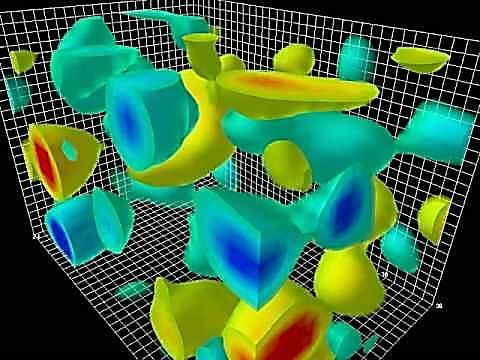
This real picture illustrates the three-dimensional structure of gluon-field configurations, describing the vacuum properties where quarks are popping in and out constantly. The volume of the box is 2,4 x 2,4 x 3,6 fm, inducing chromo-electric and chromomagnetic fields in its lowest energy state. The frame rate in this real example is billions of billions of frames per second (FPS).
3. Strong nuclear force unification (the Nuclear Quantum Gravity)
3.1 Fundamentals
This new framework consists of a quantum vacuum helping to transport matter without any friction (quarks joined and interacting through the strong nuclear force holding matter together, traveling into space as if it were a superconductor).
As an example, I’ve chosen the smallest and most abundant chemical element in the universe, the hydrogen atom, with an estimated mass of 1,673 × 10-27 kg, which contains a single electron and a single nucleus. This nucleus consists of a single proton (the basic constituent of matter), where it exerts its nuclear force, which is in turn composed of two up-quarks and a down-quark bound by the gluon interaction (all matter is made up of sets of 3-quark structures)
With these data about the hydrogen nucleus, we’ll calculate a possible average interaction during their internal transformations, creating a force while trying to contract the vacuum. For this purpose, we can think about an elastic band (it would simulate the proton strong force with a size of 8,58 x 10-15 meters) compressing two V-shaped sticks on its broadest side; if the sticks are sufficiently slippery and strong, the elastic band will slide to the narrower side The more elastic bands, the more force will be exerted on the sticks to join them; equally, the more matter at the narrow end of the sticks, the more attraction at the top. We talk about unknown limits, such as infinite conduction or tensions never seen.
Proton (hydrogen atom nucleus) mp = 1,673 × 10-27 kg
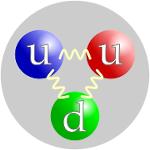
3.2 Strong force contraction
nuclear strength contracts vacuum
Contraction generates an acceleration g = 9,8 m/s2
The calculation corresponds to the angle generated at one point on the Earth’s surface to create its gravitational acceleration (the space deformation), applying the formulas from inclined planes (Newton’s second law [2]) with the following values:
▪ The proton mass has an estimated value of 1,673 × 10-27 kg (mp).
▪ The proton strong force is matched with a contraction force, having an estimated strength of 10.000 N (Fp).
▪ The gravitational acceleration on our planet is matched with the acceleration down the plane, 9,8 m/s2 (a).
▪ The friction is zero, 0
These variables are the average values from quantum dynamics interactions collected through classical physics.
** Fig. 4 and 5 are the most important figures in the document; they must be understood to continue Fig. 5 has the calculations with the parameters of figure 4 positioned horizontally to be more understandable
Separation between quarks modifies the force exerted
mp > 1,673 × 10-27 kg,
tension could produce small mass variations according to its definition
a > 9,8 m/s2
Fp > 10.000 N, tension increases
Fig. 7: Quarks behave like an elastic band.
We don’t really know the relation between the vacuum density and the strong nuclear force, so this is just an estimation, but it’s expected that more vacuum concentration could expand quarks and modify all the relations.
1. Calculate the relation between the angle and the acceleration.
Fp × sin(θ) = F1 (2.1)
F1 = mp × a = 1,673 × 10-27 × a
θ = arcsin(F1 / Fp) = arcsin(1,673 × 10-31 × a)
2. A bigger angle generates more acceleration.
a ≈ (θ / 1,673 × 10-31) m/s2 (2.2)
Another example can be created using a smaller force, e.g., a force in the nucleus of Fp = 7.000N
a = Fp × sin(θ) / mp (3.1)
a = 7.000 × sin(1,6395 × 10-30) / 1,673 × 10-27
a = 6,85 m/s2
The strong force has a positive correlation when transforming its force; increasing Fp or mp implies more acceleration, working as a spring to generate different tensions into space In addition to historical reasons of rivalry between Newton and Hooke, Hooke’s law [1] (elasticity constant) is the best and easiest approach to explain it, since this calculation is just at one point in space The force (Fp) is proportional to the distance needed to extend or compress the spring; this tensor is in charge of generating the metric tensor (gµv) to define distances and angles like for example in the Ricci curvature (Rµv)

Fp = k∆L
k = Tension (proportional constant at one point)
∆L = Displacement between quarks
But in reality, the space deforms not proportionally, creating more acceleration near the accumulation of matter, behaving like an elastic material This behavior can be quantified by the elastic modulus or Young’s modulus, which represents the factor of proportionality in Hooke's law in non-linear systems The Young’s modulus (E) [3] depends on the force exerted by matter (σ) and the deformation (Ɛ) at each point of the resulting vector.
E = ∆σ / ∆Ɛ
The force exerted by the angle (θ) increases (∆) faster than the strong force (Fp) and its relation to mass (mp); the greater the distance, the weaker the force.
∆Fθ > ∆Fp / ∆mp (4.1)
The variation in the size of the atomic nucleus due to the vacuum density can exert force over long distances.
Young’s modulus (E)

Fig. 9: Gravitational field around Earth.
The relation between the strong force and the quantum vacuum modifies the space density since it induces their approach because of the electromagnetic extraction and its dispersion; therefore, we can speak of the existence of a bulk modulus (K), which depends on the pressure changes (p) and volume (V)
K = -V (∆p / ∆V)
We only know this relation for Earth calculations, but it must be associated with actual hypothesis like general relativity (GR) and Einstein field equations (EFE), where matter bends space using a bender of unknown origin, determining the geometry of space depending on the distribution of matter over intricated energy density fields Also, we can find other connections, like the Modified Newtonian Dynamics (MOND) hypothesis [7], which proposes a modification of Newton's law of universal gravitation to account for observed properties of galaxies having multiple observational evidences, but being inaccurate at large scales.
Einstein Field Equations (EFE) (5.1)
Matter tells space how to bend
Space tells matter how to move
Other properties such as volume viscosity, also called bulk viscosity, can be applied.
3.4 Fundamental interactions
By now, this is the new fundamental interactions grouping result:
▪ The strong force and gravity have been unified.
▪ Electromagnetism and the weak force are actually unified by the electroweak interaction.
▪ The quantum vacuum is a new fundamental interaction because of its strength and the fact that it isn’t reducible to more basic forces.
But it can be improved
4. Quantum vacuum unification (the Theory of Everything)
4.1 Structure
We need a quantum vacuum structure that allows us to unify the different types of fields and their behaviors, being at this point the most important, the constant motion of matter, the travel of subatomic particles, and the electromagnetic field generation One solution would be a metastable system with different balances; the topological model proposed are polarized triplets, rotated in a static balance (a symmetric group), differentiated in the 3 spatial axes, where each element is in continuous repulsion
▪ Matter is composed of protons and neutrons (nucleons), which make up each element of the periodic table; at the same time, each nucleon is made up of 3 quarks. The only way to maintain the real speed of matter stable and not be accelerated to the speed of light is through an asymmetric vacuum, in this way the repulsions and attractions of each quark triplet are balanced by the 3 spatial directions in which the vacuum triplets are arranged (quarks triplets against vacuum triplets) The average sum of all vector forces (VF) in each spatial direction is 0, for this reason, matter is not accelerated to the speed of light, the asymmetrical multistability prevents it
��FX + ��FY + ��FZ = ��F net = 0 (6 1)
This asymmetry is the cause of quantum chromodynamics (QCD) [6] colors and anti-colors (3 types of each) and their transformations, where the nucleon structure doesn’t collapse inward due to the outward vacuum forces, being the only thing bigger than each individual frame capable of surviving it. Even the different types or flavors of neutrinos (electron, muon, and tau) can be studied as a motion system between triplets, more like how matter interacts with the vacuum.

+(1, 0, 0)

+(0, 1, 0)
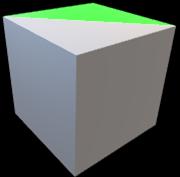
+(0, 0, 1)

▪ Its ±½ polarization shapes fermions, having an internal force trying to expand with a spherical distribution as is theorized for U(1) gauge, so particles smaller than this frame can be easily dispersed in all directions
(6.2)
Both the vacuum permeability and permittivity (associated with the density of an electric field defined by Maxwell [4]) are originated from the quantum vacuum magnetization and polarization to create virtual electrons, having as their greatest quality to emit or absorb energy The collective alignment of each magnetic moment creates magnetic domains, where temperature and atomic structure play crucial roles.
All the elements in the periodic table have a mass or nucleon number related to their number of electrons, so nucleons should be able to extract and recover this energy as electromagnetism from each polarized container. The strength of the electromagnetic interaction between elementary charged particles is known as the fine-structure constant, and it helps to create electromagnetic bonds like the hydrogen bond to conform the chemical compounds (under normal conditions, it is impossible for a proton not to possess an electron) These electromagnetic attractions can affect the gravitational force, but only in a residual way
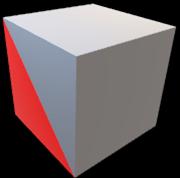
-(0, 1, 0)

-(0, 1, 0)
12: Electromagnetic field extraction.
▪ Light has its own inertia; it travels at almost 300.000 kilometers per second, but it slows down to about 225.000 kilometers per second in water (it depends on the electromagnetic properties of the medium it’s embedded in), recovering its speed when leaving it
Subatomic particles (photons or neutrinos) are smaller than this basic frame, so they can be transported by the vacuum; their infinite amount of accumulated inertia comes from the spin speed (SF) of this energetic vacuum, where quarks are trying to be accelerated too, but its stability prevents it.
��F1 = c
(6.3)
These basic frames can be seen as the smallest units of time, where other behaviors can be studied, such as the photon generation through a monopole interaction.
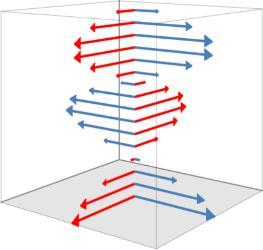
Fig. 15: Theory of Everything scheme.
Its properties, also determined by thermal radiation and pressure, could create the first conditions for life by helping to compact structures like the double helix in the chromosomes, considered to be the origin of biological homochirality (probably gained by the quantum superposition), giving rise to more complex structures like worms, with which we can share up to 70% of our DNA, being considered the evolutionary forerunner of most animals
But wondering about the future, if the scientific method is based on determinism and hidden variables don’t exist, we could consider an absolute determinism (neither chaos nor free will exists, being all pre-calculated) and overcome the resulting frustration by thinking of ways to break it, such as this is a cycle in an acyclic universe (so we start from a blank canvas); through overmuch information in the universe (all the photons from all the stars can’t be predetermined); we are a tool capable of changing the probabilities of such determinism (consciousness would help); or God (if we are an expression from the vacuum, there is something that can feel inside it); And looking back to the past, remember all the discussions about ethics to distinguish right from wrong, and its association to physical or divine terms to create laws governing life in society.
From now on, I only hope I have raised your consciousness level, offering you a better understanding of your environment.
5. Conclusions
In philosophy, Occam's razor (also known as the principle of parsimony) is the problem-solving principle that recommends searching for simpler explanations, constructed with the smallest possible set of elements or fundamental concepts because they provide better results than more complex ones. This rule has been of capital importance in the development of science.
This theorical framework presented can explain behaviors such as:
▪ The gravitational force, understood as an interaction between the strong nuclear force and the quantum vacuum, going so far as to explain quarks motion and the electromagnetic field generation, until obtaining a unified field theory.
▪ Dark matter due to changes in the gravitational force caused by quantum vacuum density variations. Recent studies have associated the cosmic microwave background (CMB) with dark matter behavior [8]; thus, the cosmic microwave background should be related to the quantum vacuum and its energetic density. The universe is anisotropic (is not uniform in all directions).
▪ Dark energy and cosmic inflation. The behavior of each individual container implies a spin-based repulsion helping to its expansion, strong enough to avoid joining and be able to reestablish its structure after any contraction; this generates the required propagation force over large distances to allow the expansion of the universe. In fact, the latest research on the expansion of more than 1.500 supernovae indicates that this expansion is not uniform and changes with time, also calling into question the gravitational constant [9]
▪ Black holes as a density break. The vacuum concentration becomes so strong that its repulsion can break the strong force bonds, generating their rupture and its subsequent explosion, and leading to new internal concentrations (just inside its Schwarzschild radius a black hole varies its nuclear density starting from a minimum of 4 × 1019 kg/m3, more extreme than our nuclear density of 2,3 × 1017 kg/m3) Any structure smaller than a container, such as neutrinos, can escape and be transported through the vacuum; photons, depending on the size of each container, can be attracted due to a behavior similar to that of matter, or due to the internal curvature of the vacuum (their different nature from neutrinos makes them elusive).
▪ Particles decay due to the vacuum interaction This can correspond to current theories about the decay of the false vacuum, a not so stable vacuum that allows the disintegration of particles; in turn, the disintegration (conversion) of a neutron into a proton may be due to a very weak polarization of the vacuum, a polarization given by our location in a zone of the universe with that tendency (remember that the neutron is not considered a neutral charge, but a dipolar charge, that is, 2 equal electric charges of opposite sign).
▪ Gravitational time dilation. Each container is connected with spacetime; a bigger frame implies minor energy concentration, and the displacements in space imply less frames to pass through, which means less time.
▪ The QDS can be considered as the smallest significant length of time that can be validly measured This size has been attempted to be explained since Zenon's paradoxes (430 BC), dedicated mainly to the problem of the continuum and the relations between space, time, and motion, until nowadays with infinitesimal calculus where a mathematical curve can be analyzed as if it were constituted by homogeneous separable points.
▪ The gravitational constant (G = 6,67408(31) × 10 11 m3kg-1s-2), vacuum permittivity (ε0 = 8,8541878128(13) × 10 12 F⋅m 1), or vacuum permeability (μ0 = 1,25663706212(19) × 10 6 N⋅A 2) and the problems to measure with high accuracy since they can be affected by density variations Even small modifications in the speed of light can be expected due to the vacuum-related spin; in fact, the speed of light can be calculated based on the previous variables about vacuum permittivity and permeability using Maxwell’s equations, c=1/√(ε0μ0)
▪ Conservation of angular momentum at bodies’ rotations in space with spherical and circular movements at planets and galaxies. Applying this conservation during the Big Bang, antimatter is not necessary to create it and could lead to less antimatter than 50% in the universe as expected (a small portion could have been generated during the explosion).
▪ Variations in E = mc2 to set the rest energy of matter, for example, we could obtain E = AFp where A is the number of nucleons within the nucleus
▪ Compatibility with light and matter interaction (QFT) [5] according to QED vacuum theories, and the fact that electrons cannot occupy the same quantum state or light refraction; as well as the wave function and Schrödinger and Dirac equations, describing how the state of a system changes with time via quantum oscillators.
▪ Planck length (ℓP = 1,616255(38) × 10-35 m) and Planck time (tP = 5,391247(60) × 10 44 s) are theoretically considered the quantization of space and time and may point to the vacuum structures by length as well as time. Planck referred to relativistic values, which may not be so accurate; for example, gamma rays have one of the smallest wavelengths, shorter than 10-11 meters.
▪ The residual strong force (the bond between protons and neutrons), which is much weaker than the (real) strong force, has a correlation between quarks up and down that can be perfectly electromagnetic, as it was originally considered.
▪ Similarities between Newton’s and Coulomb's law or Einstein’s relativity and Maxwell’s equations for the electric field; Fleming's left-hand rule, used in electromagnetism, may come for example from the rotation of the earth in the universe and consequently be related to Maxwell's tensor
▪ The unidirectional arrow of time…

6. Considerations
Gravitomagnetism (GEM) is a term that refers to the kinetic effects of gravity in analogy to the magnetic effects of a moving electric charge Here we will create a relativistic relation to extract the magnetic moment and check its behavior, independently of GEM equations
We can accelerate matter using a chamber with magnetic coils to transform as much matter as possible into energy, with sufficient width and height to concentrate the internal energy and study how the quantum vacuum bends. We need a material with as much permeability in high magnetic fields as possible; pure iron can be a good reference, but we can consider some other materials with high permeability. The centrifugal force will force matter outwards, so we need a magnetic field to keep its dimensions. We need sufficient width and height to concentrate internal energy and study how the vacuum is bent; it’s complex to concentrate kinetic energy at one point to obtain its potential energy
As an example, we’ll calculate the energy of one disk in motion, taking the radius and a height of 50 cm, using iron with density ρ = 7,874 gr/cm3, with the following mass: V = π × r2 × h = 392.700 cm3 (8.1) m = 392.700 × 7,874 = 3.092.119,8 gr = 3.092,119 kg
Considering a maximum speed reached, we’ll compare its kinetic energy with the maximum energy that could be generated using a relativistic approximation.
Vacuum density may change in connection with the electromagnetic extraction

Weight can be increased about 1/100 at a speed of 3 × 107 m/s
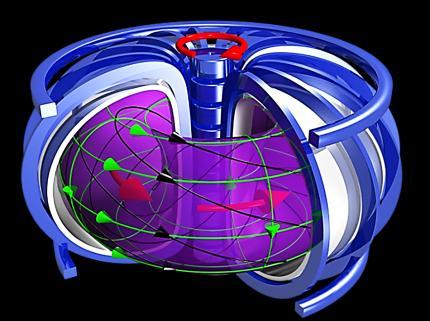
17: Motion and relativity relation.
v = 3 × 107 m/s (near the speed of light) (8.2)
Ek = ½mv2
Ek = ½ × 3.092,119 × 9 × 1014
Ek = 13.914,535 × 1014
E = mc2
E = 3.092,119 × 9 × 1016
E = 27.829,071 × 1016
The energy calculated at the disk periphery can have a magnetic relation with its motion Its charge (q) and magnetic field (B) are linked with its velocity, where v = qBr / m, so the energy generated can be calculated when a speed is reached in a relativistic approximation.
E = ½mv2 = q2B2r2 / 2m
Other variations at QCD have been observed, like at baryon resonances.
There are other systems to try to extract all this energy from the vacuum such as using metamaterials or laser pulses in research phase, but this would only be the first part of the problem since it would be necessary to redirect all this energy and try to create what is known as Warp drive (Alcubierre drive), so that changes in density between different areas around a body allow its motion For the Warp drive to work, it requires a negative energy density which means we need exotic matter, this is deduced from the stress-energy tensor (Tμν) defined in Einstein's field equations. The Casimir effect shows that such negative energy can exist, but creating enough to create a curvature bubble is a big challenge.
In addition, we have what is called the 'vacuum catastrophe', due to the 122 orders of magnitude disagreement between the calculated limits for this density depending on how we compare the data, starting from the Planck constants or choosing to start from the cosmological constant. This discrepancy is known as the worst theoretical prediction in the history of physics.
=5,16×1093 g cm3 ⁄
Density normalized using Planck (ħ) (9.1) ��
=5,83×10 30 g cm3 ⁄
Density normalized using the Cosmological Constant (Λ)
Again, and according to our model, this magnitude may not have a correct approach since we could see this density as an adiabatic transformation (the one occurring in gases) or a negative hydrostatic pressure (like the one occurring under the sea but in the opposite direction)
